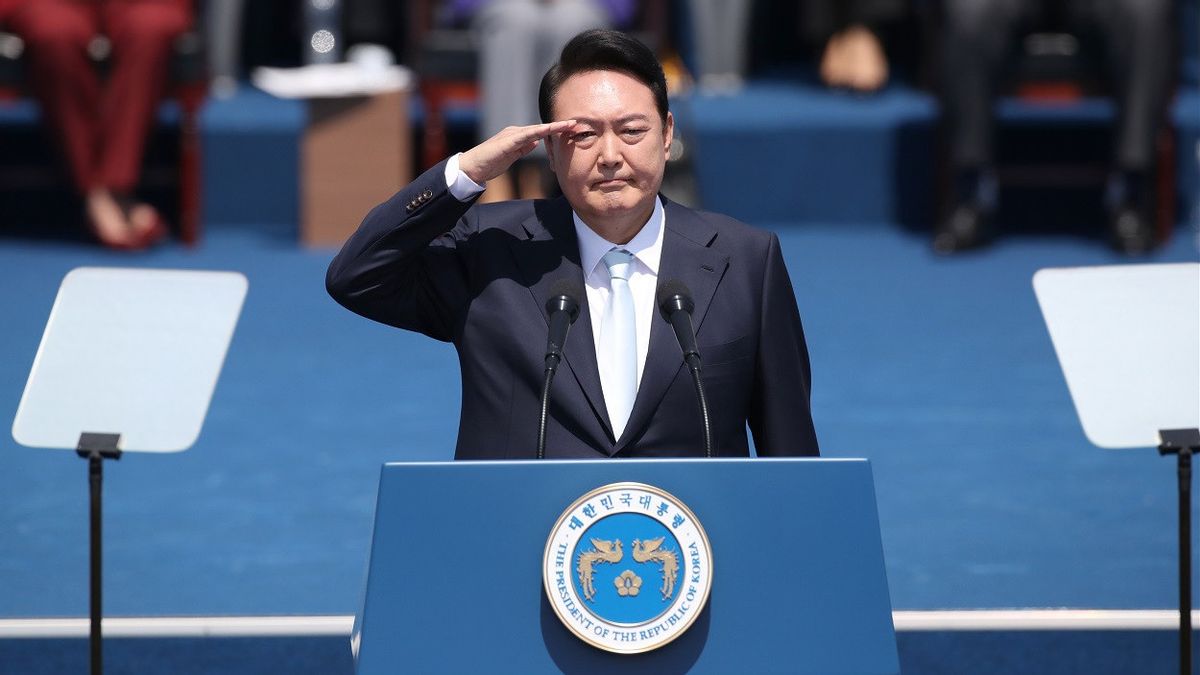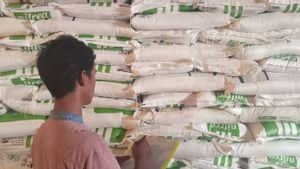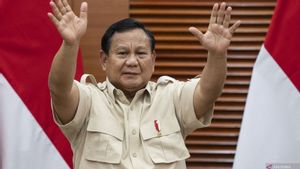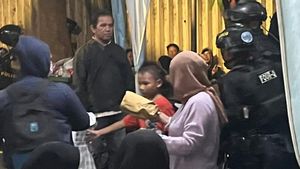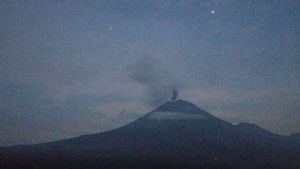JAKARTA - South Korean President Yoon Suk-yeol plans to form a special military unit specializing in drones, after criticizing the military's failure in dealing with North Korean drones entering the Ginseng Country.
South Korea deployed fighter jets and attack helicopters, as five North Korean drones entered their territory on Monday, trying to shoot down, in the first intrusion since 2017.
The incident revived questions about South Korea's air defenses, while trying to control North Korea's growing nuclear and missile threats.
The military fired warning shots and about 100 bullets from helicopters equipped with machine guns, but failed to drop one of the drones as they flew over several cities in South Korea, including the capital Seoul, for about five hours.
"The incident demonstrates our lack of military readiness and training over the past few years, and clearly emphasizes the need for more intense readiness and training," President Yoon told a cabinet meeting.
President Yoon blamed a lack of readiness for his predecessor's "dangerous" North Korean policy, which relies on Pyongyang's "good intentions" and the 2018 inter-Korean military pact, which prohibits hostile activities in border areas.
"We have planned to form a drone unit to monitor and spy on North Korea's main military facilities, and will now accelerate the plan as much as possible," he added, pledging to increase its surveillance and reconnaissance capabilities with the cutting-edge stealth drones.
Meanwhile, the South Korean military apologized for its failure to shoot down the drone, which it said was too small to intercept easily, measuring about 3 meters (118 inches).
The military also said it was unable to attack drones aggressively due to concerns over the safety of civilians, pledging to increase anti-drone capabilities including attacker assets, destructive technology and radar, as well as regular air defense exercises.
"It is regrettable that we cannot drop enemy drones on time and efficiently while considering public safety," Kang Shin-chul, a senior official at the Joint Chiefs of Staff (JCS) said in a briefing.
"As a result, our lack of military readiness has raised many concerns for the community," he continued.
The incident is known to be the latest airspace intrusion by an unmanned aerial vehicle from isolated North Korea, with the two Koreas technically still at war after the 1950-53 war ended in a ceasefire, not a peace agreement.
In 2017, a North Korean drone on a spy mission fell and was found on a mountain near the border. Meanwhile, in 2014, a North Korean drone was discovered on the South Korean border island.
Both devices are considered abusive, fitted with cameras, most of which contain images of military facilities and South Korean border areas.
But the 2017 drone was capable of flying as far as 490 km (304 miles) and had twice the engine and battery capacity of the 2014 device, Seoul officials said at the time.
JCS says the latest drones are similar in size, but it's not clear if they're technically more advanced.
Analysts say drones may be too small and primitive to carry out full reconnaissance missions, but they are sufficient to carry weapons or interfere with flight activity, as seen on Monday, when flights departing from Incheon airport and Gimpo are temporarily suspended.
"The incident caught the South Korean military off guard, showing the inaccuracy of its response," said Cha Du-hyeogn, senior researcher at the Asan Institute for Policy Studies in Seoul.
"They need to check GPS disruptions and the overall response system."
A 2016 report by UN sanctions monitors said North Korea had about 300 drones of various types, including reconnaissance, target and combat exercises.
The English, Chinese, Japanese, Arabic, and French versions are automatically generated by the AI. So there may still be inaccuracies in translating, please always see Indonesian as our main language. (system supported by DigitalSiber.id)
